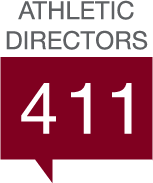The electrifying moments when athletes like Caitlin Clark shatter records and captivate audiences underscore the growing interest in women’s college sports. However, beneath this surge in popularity lies a stark reality: significant gaps persist between men’s and women’s participation in college athletics. Recent reports highlight these disparities and urge a renewed commitment to Title IX compliance. As athletic directors, your role is pivotal in bridging these gaps and ensuring equal opportunities for all student-athletes.
Current Landscape and Findings
A recent report by the U.S. Government Accountability Office (GAO) has brought to light the critical issue of the underrepresentation of women in college sports. Despite women enrolling in college at higher rates than men, their participation in athletics significantly lags. During the 2021-2022 academic year, about 93% of colleges reported lower athletic participation rates for women compared to their enrollment rates. Specifically, women’s athletic participation was 14 percentage points behind their enrollment rate.
The GAO report criticizes the Office for Civil Rights (OCR) for insufficient proactive measures and delayed communications regarding Title IX compliance. The OCR’s oversight practices have often been reactive and marred by long delays in responding to colleges’ reports and compliance assessments. This inefficiency hinders progress toward achieving gender equity in collegiate athletics.
The Popularity Paradox
While the GAO report reveals these participation gaps, it’s important to recognize the paradox of the growing popularity and viewership of women’s sports. Caitlin Clark’s remarkable achievements have significantly boosted the visibility of women’s basketball, with the 2024 women’s basketball championship garnering higher viewership than the men’s for the first time in NCAA history. Media coverage of women’s sports has nearly tripled in the last five years, driven by increased fan interest and the performances of standout athletes.
Despite this rise in popularity, a March 2024 Grinnell College National Poll indicates that half of the respondents believe women’s college sports still receive less attention than they deserve. Female respondents, in particular, feel strongly about this discrepancy, with 62% stating that women’s sports receive less attention compared to men’s. This sentiment is especially prevalent among older adults, who are more likely to perceive an imbalance in media and public attention.
Implications and Actions for Athletic Directors
Ensure Compliance and Equity
1. Proactive Title IX Compliance
Implement regular audits and proactive measures to ensure that your athletic programs comply with Title IX requirements. Utilize available data effectively to monitor and address any disparities in athletic opportunities.
2. Timely Communication
Establish efficient communication channels with the OCR and respond promptly to any inquiries or compliance issues. Reducing delays in addressing Title IX concerns is crucial for maintaining equity.
Enhance Visibility and Support
3. Boost Media Coverage
Collaborate with media outlets to increase coverage of women’s sports. Highlight achievements and stories of female athletes to generate more interest and support.
4. Engage the Community:
Organize community events and outreach programs that showcase women’s athletics. Engaging fans and local communities can help build a robust support system for female athletes.
Address Resource Allocation
5. Equitable Resource Distribution:
Ensure that resources, including funding, facilities, and coaching staff, are distributed equitably between men’s and women’s sports programs. This balance is vital for providing equal opportunities and support.
6. Scholarship Opportunities
Increase the availability of scholarships for female athletes to encourage greater participation and retention in college sports.
Foster a Supportive Environment
7. Mentorship and Development
Develop mentorship programs that connect female athletes with successful alumni and professionals in the sports industry. This can provide valuable guidance and inspiration.
8. Inclusive Culture
Promote an inclusive and supportive culture within your athletic department. Encourage dialogue and initiatives that foster gender equity and address any biases or stereotypes.
The rise in popularity of women’s college sports presents a significant opportunity to address the longstanding participation gaps. As athletic directors, you are at the forefront of this change. By ensuring proactive Title IX compliance, enhancing visibility and support for women’s sports, equitably distributing resources, and fostering a supportive environment, you can play a crucial role in bridging these gaps and championing gender equity in college athletics. Let’s seize this moment to create lasting, positive change for the future of women’s sports.
Resources:
City Pulse
Des Moines Register




